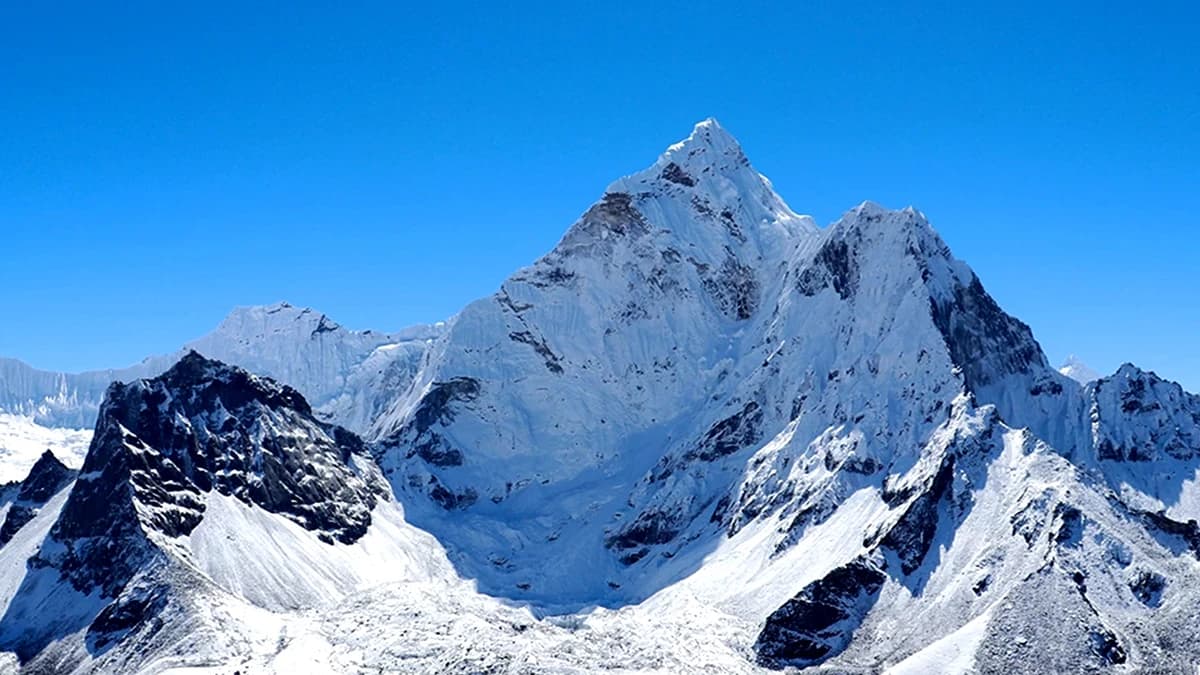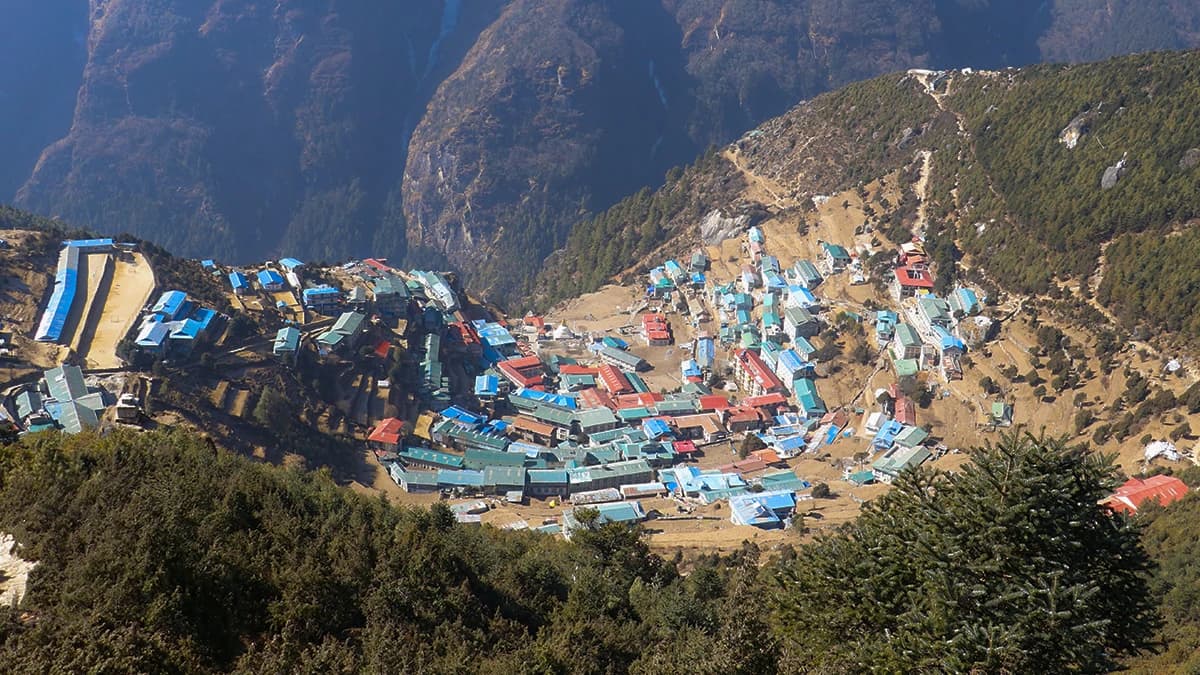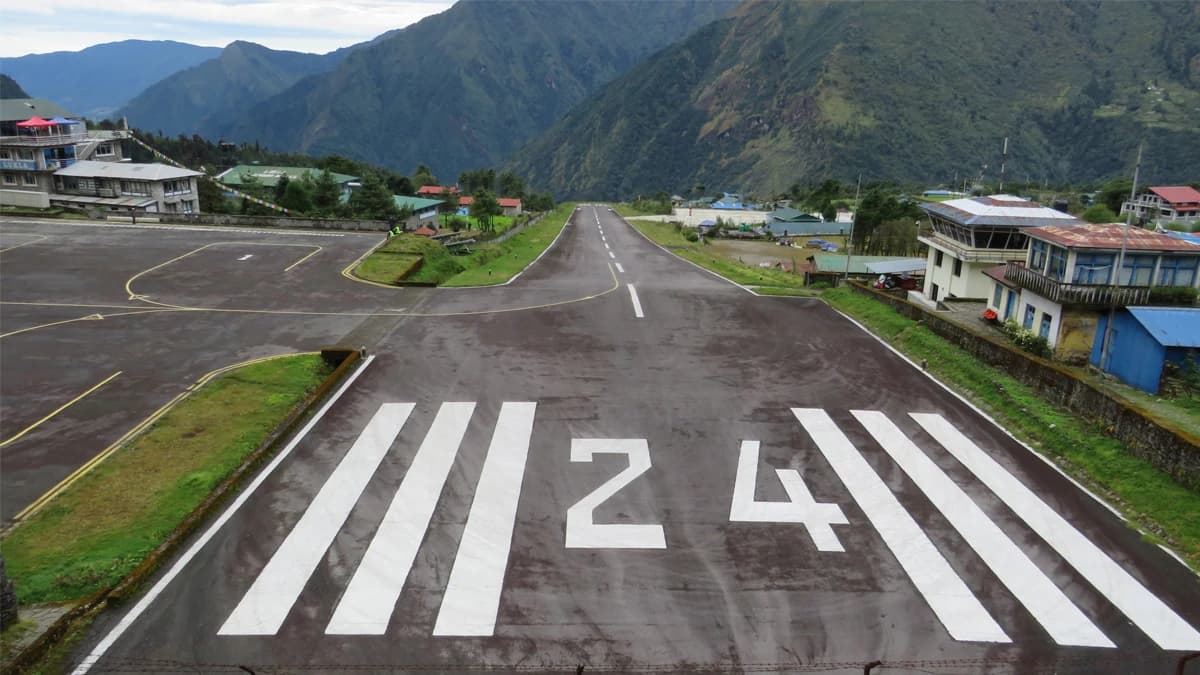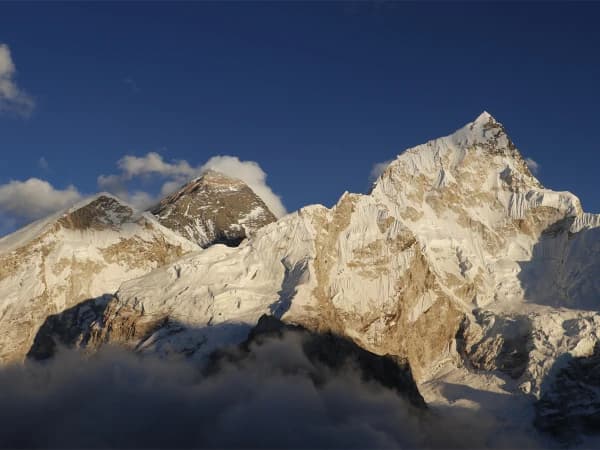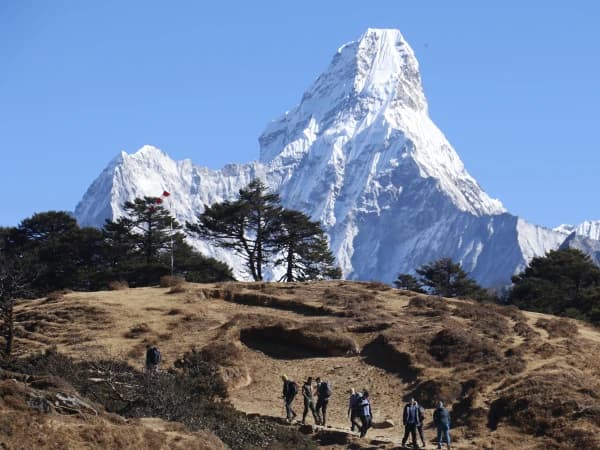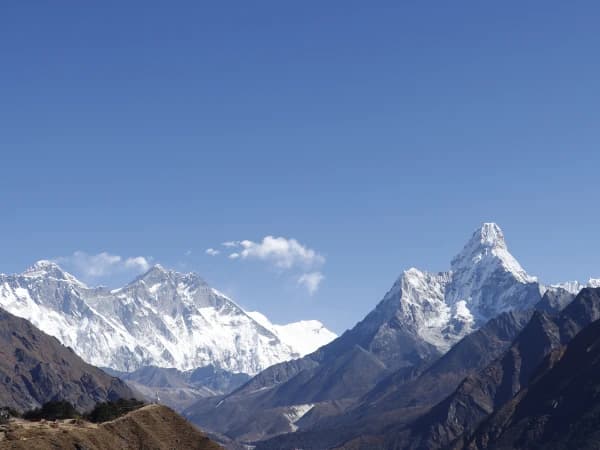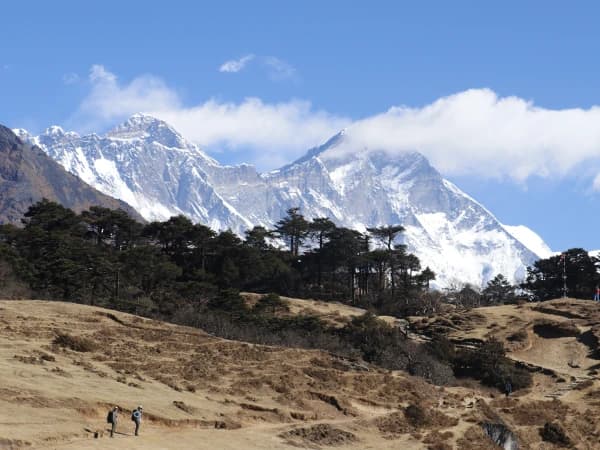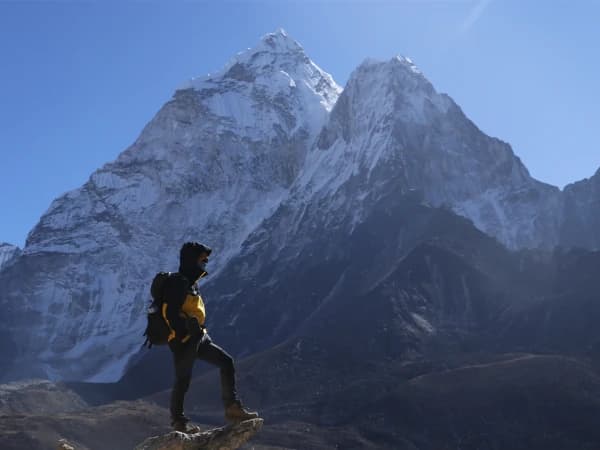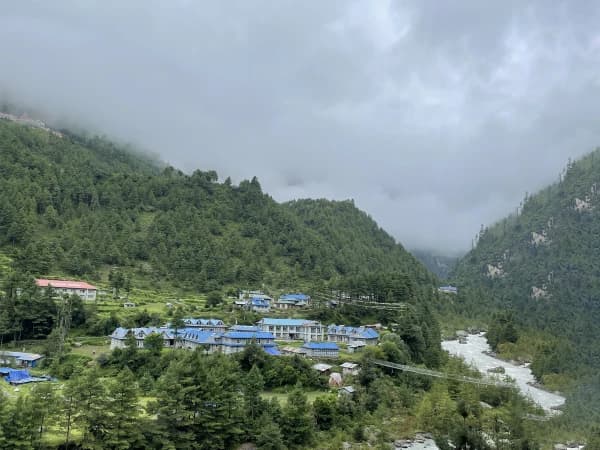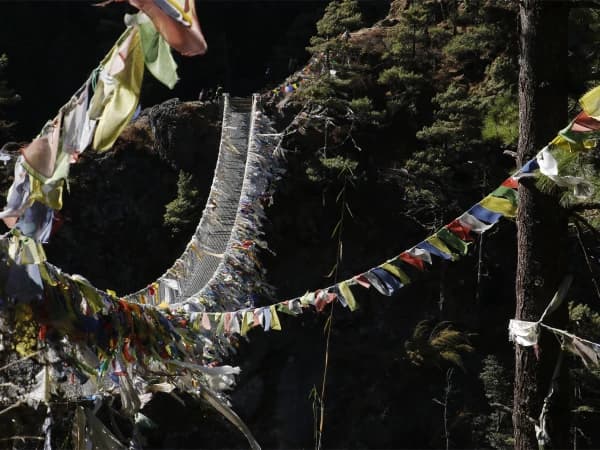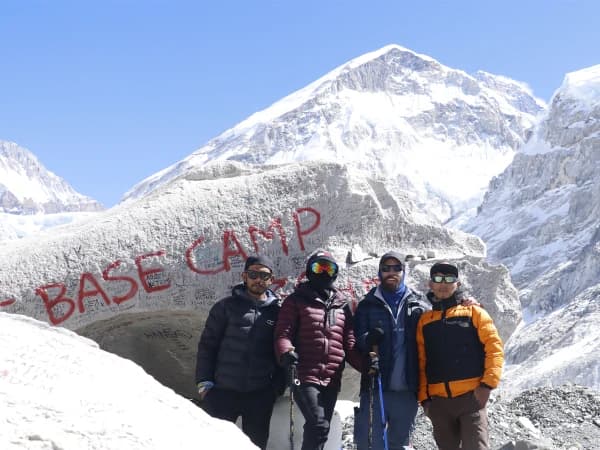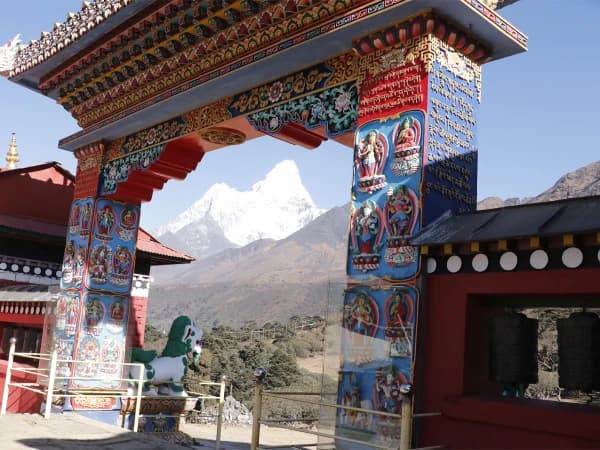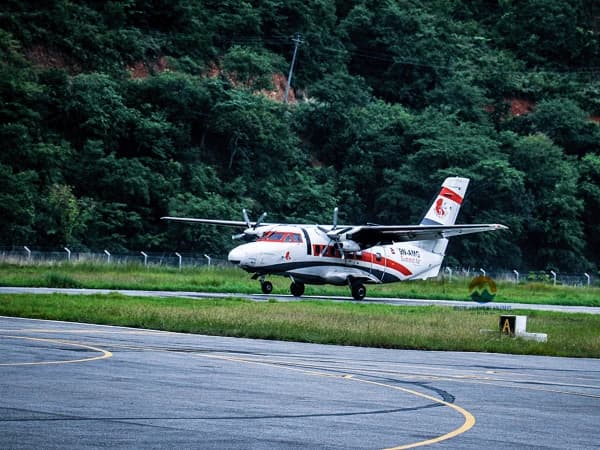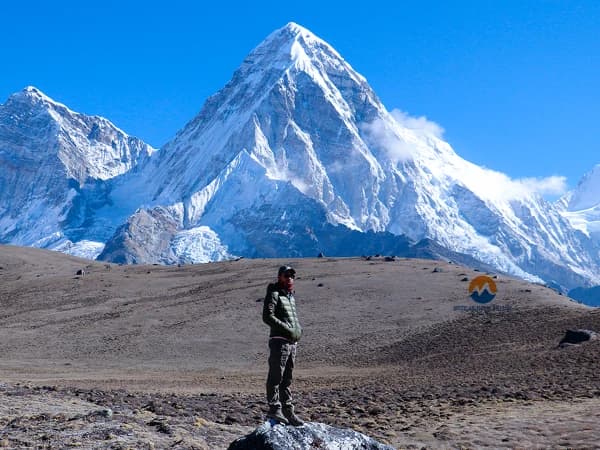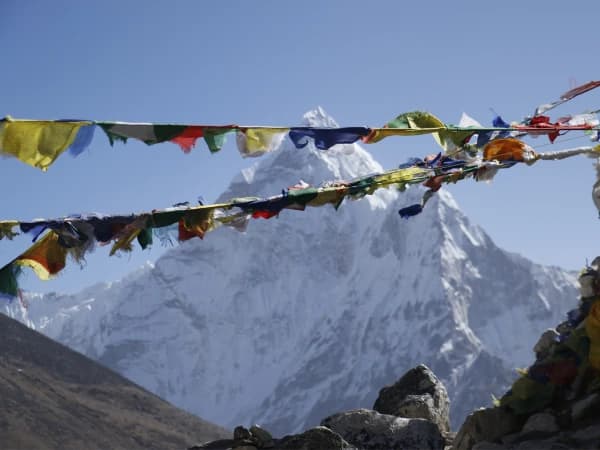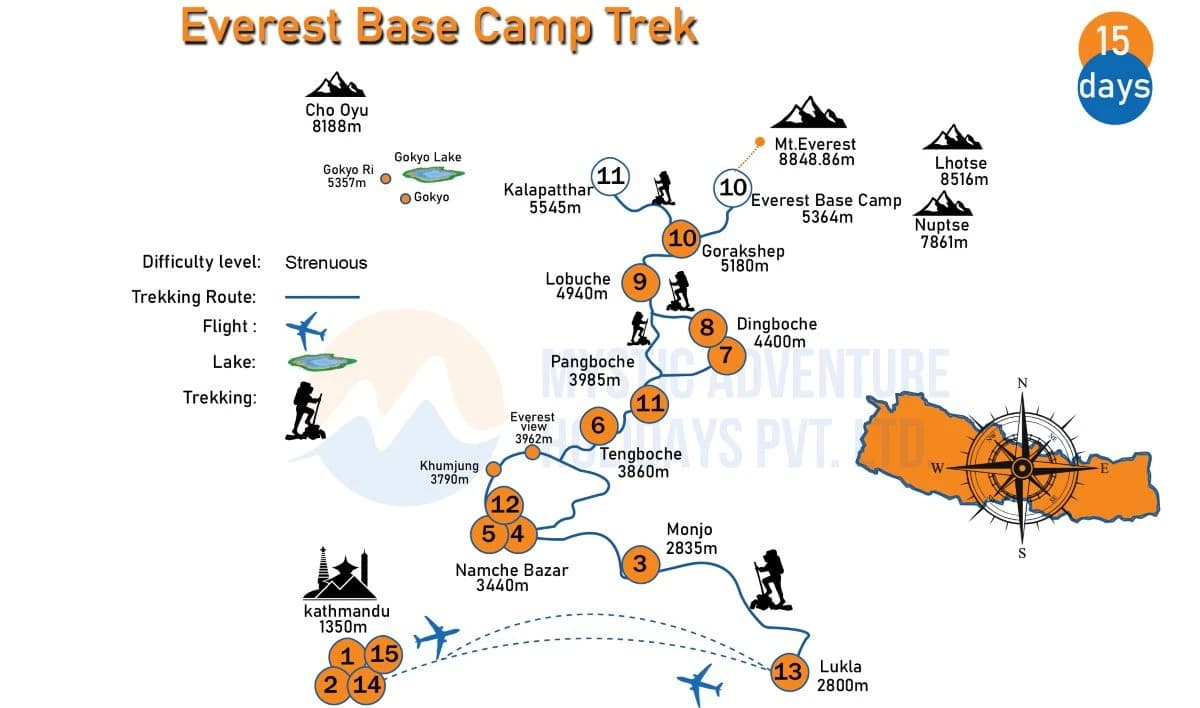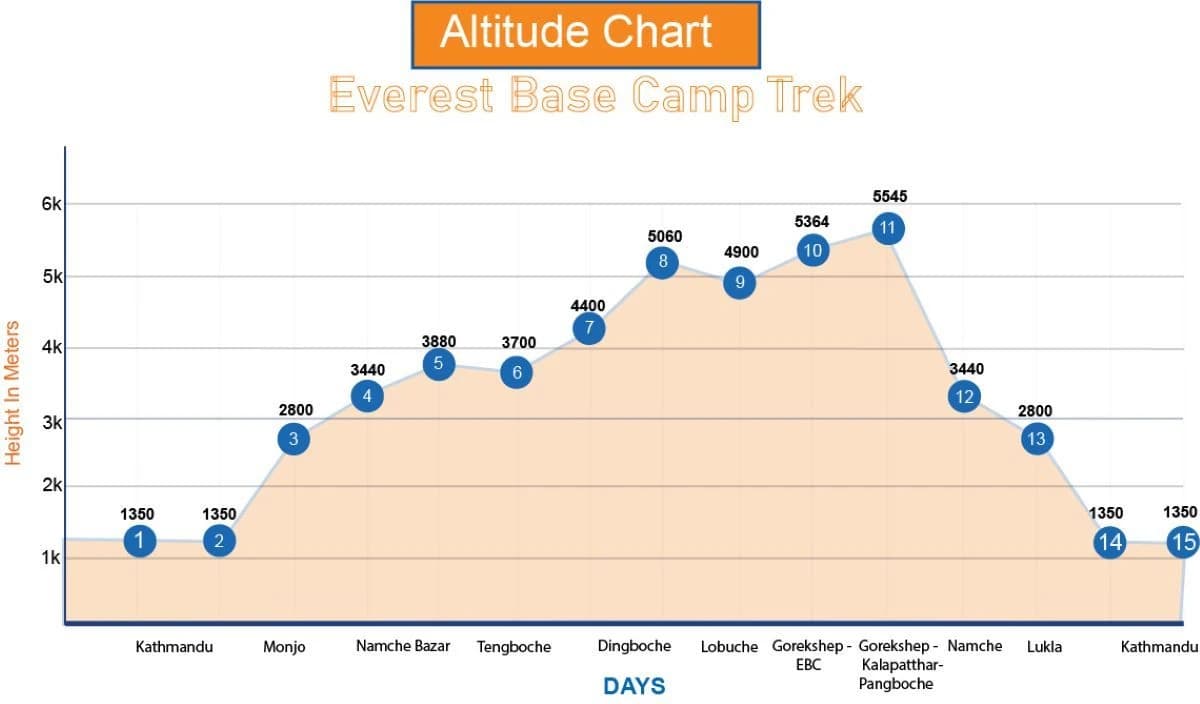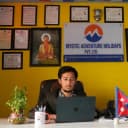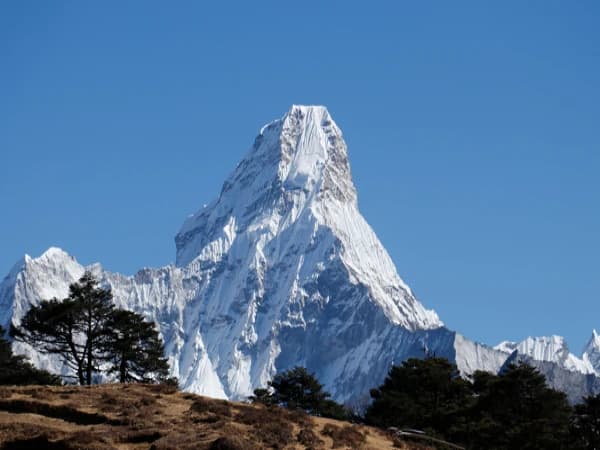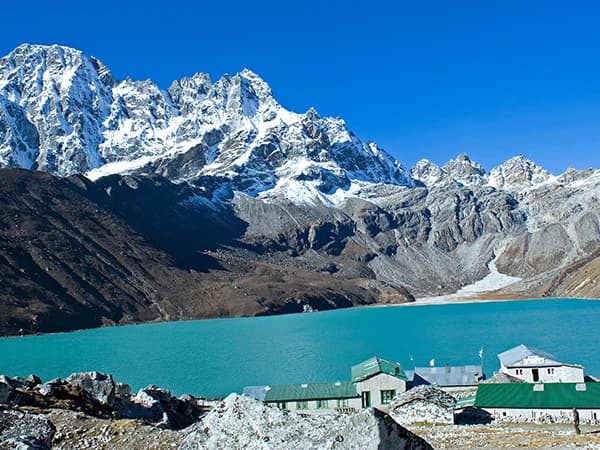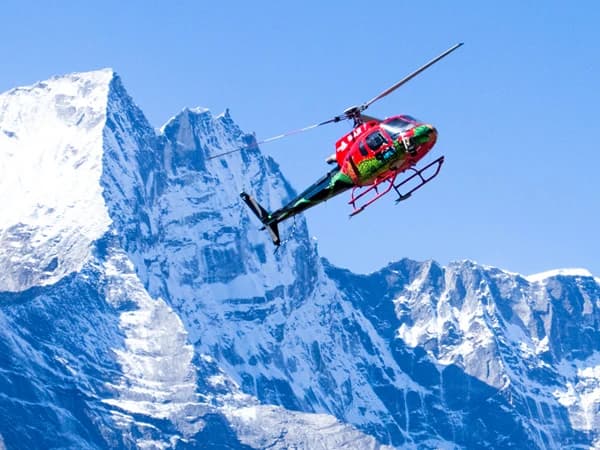15 days Everest Base Camp Trek is an adventurous journey to the Everest base camp (EBC) and Kala Patthar in Sagarmatha national park in Nepal. This EBC trekking itinerary offers the unparalleled opportunity to experience the breathtaking beauty of the Everest Himalayan region.
General Highlights of 2026 Trek
- Exploration of unesco world heritage sites like Sagarmatha national park, Pashupatinath temple, Bouddhanath temple and many more.
- 15 days Everest base camp trek itinerary starting from one of the world’s most dangerous airports, lukla airport.
- Panoramic views of Mount Everest and other surrounding eight-thousander peaks, including Lhotse, Makalu, and Cho Oyu all having heght above 8000 meters.
- Visit several monasteries, like tengboche monastery and gain spiritual insights.
- Trek to one of the highest glaciers in the world, khumbu glacier (terminus height: 4,900 m).
- Interact with Sherpa communities, learn about their traditions, and experience their hospitality.
- Trekking through diverse terrains, including lush rhododendron forests, alpine meadows, and rugged mountain landscapes.
- Chance to encounter the unique wildlife such as musk deer and colorful pheasants along the trekking routes.
- Acclimatization in the teahouse in namche bazaar and dingboche that has great views of the snowcapped peaks.
- Hike to the Kalapatthar for the breathtaking sunrise views of the snowcapped peaks.
- Added itinerary plan of the Kathmandu city excursion before the trekking journey.
Brief Overview of 2026 Trek
The 15 days Everest Base Camp Trek itinerary starts with sightseeing in kathmandu. During his day tour in Kathmandu, you will explore the sites that reflect the ancient religious and historical heritage of Nepal. The places that you will explore as part of the itinerary are Boudhanath Stupa, Pashupatinath Temple, Kathmandu Durbar Square, Swayambhunath Stupa (Monkey Temple), Garden of Dreams and more.
The most loved attractions of the trekking to Everest Base Camp are the stunning views of the prominent peaks, including the world’s highest peak, Mount Everest. Other surrounding peaks such as Lhotse, ama dablam, Nuptse, Cho Oyu, Thamserku, and others also will greet you along the way.
This trek takes you close to the culture and traditions of the Sherpa community. Because of this opportunity, you will get to learn about Tibetan Buddhism and animism. There are several monasteries and mani walls in the Sherpa village that teach you about the true essence of life and spirituality.
The 15 days EBC Trek route goes through diverse terrains, including lush rhododendron forests, alpine meadows, and rugged mountain landscapes. This may be challenging but gives you immersive experiences in diverse ecosystems. In addition, you may spot wildlife like snow leopards, musk deer, Himalayan tahr, red pandas, wild yaks, etc.
If you want to learn more about the trek, here is the list of faqs.
Special Highlights of 2026 season Trek
-
Gorakshep (5,164 meters)
Gorakshep was previously recognized as the original base camp for climbers attempting to summit Mount Everest. However, the destination still holds importance by offering lodging and services for trekkers who cannot camp at Everest Base Camp itself. The trekkers who trek to base camp of Everest spend the night here as part of their itinerary. Facilities are modest but often include food services and sometimes high-speed internet. The area is cold and is surrounded by rich biodiversity.
-
Everest Base Camp (5,364 meters)
Mt. Everest Base Camp is the main destination of the 15 days Everest Base Camp trekking itinerary. This camp offers the breathtaking views of Khumbu Glacier and surrounding peaks. In addition, the place is a hub for spiritual experience, as there are several Tibetan Buddhism-influenced villages and ancient monasteries. There are camps equipped with basic amenities in ebc, including food supplies transported by porters and yaks. You can enjoy the delicious meals while enjoying the views around.
-
Kala Patthar (5,545 meters)
Kala Patthar is an important landmark in the Khumbu region of Nepal. From the Kala Patthar, you can see the close panoramic views of Mount Everest and its surrounding peaks. It is the highest altitude that you will reach during the trek, as per Mystic’s 15-day Everest Base Camp Trek itinerary. The sunrise and sunset views from the Kala Patthar look stunning. Besides it, if you are lucky, you may spot the rare snow leopard roaming around in the alpine meadows and rocky terrains.
Why us for Iconic 15 days Everest Base Camp Trek 2026?
3S: Safety, Success, and Satisfaction
Booking an 15 days Everest Base Camp trek packages 2026 with Mystic Adventure Holidays offers superior service and benefits long with the smooth itinerary plan. Here’s why:
- Client Safety: Our trips are organized with the utmost safety in mind.
- Best Price Guarantee: Ensuring you get the best value.
- Free Transfers: Complimentary airport-to-hotel and return transfers in a private vehicle.
- Expert Guides: Trained, government-licensed local guides with extensive route knowledge.
- Support for Locals: Helping local communities earn a living through tourism.
- Health Monitoring: Oximeters to monitor oxygen levels during high-altitude EBC treks.
- Medical Preparedness: Guides equipped with medical kits to handle any situations that may arise.
- Essential Gear: Arrangements for sleeping bags and down jackets.
- Free Storage: Secure storage at our office orr hotel for extra luggage during your tour.
- Convenience: Duffel bags for transferring items to be carried during the journey.
- Porter Service: A free porter to help carry your heavy bags.

